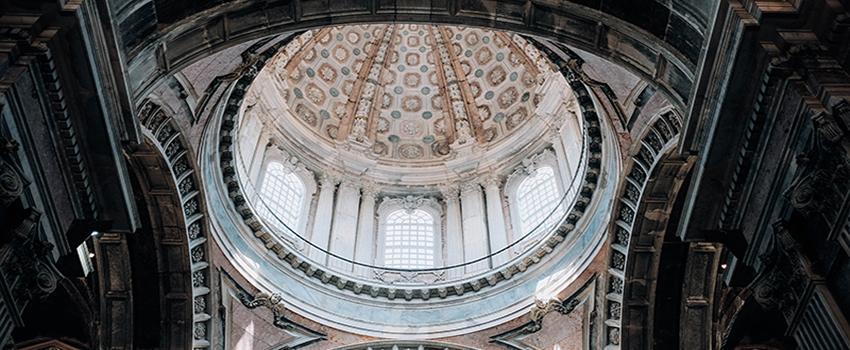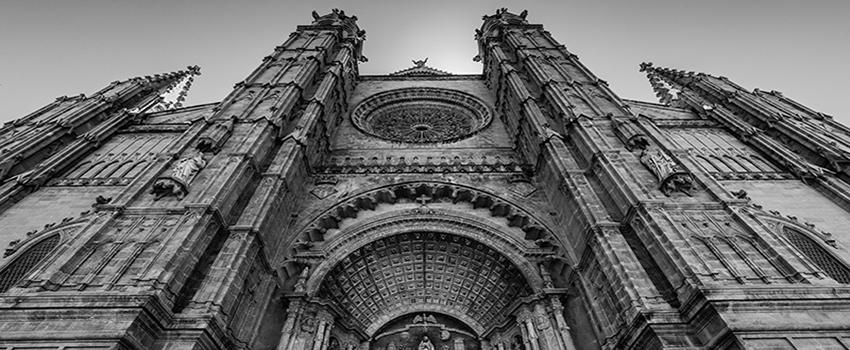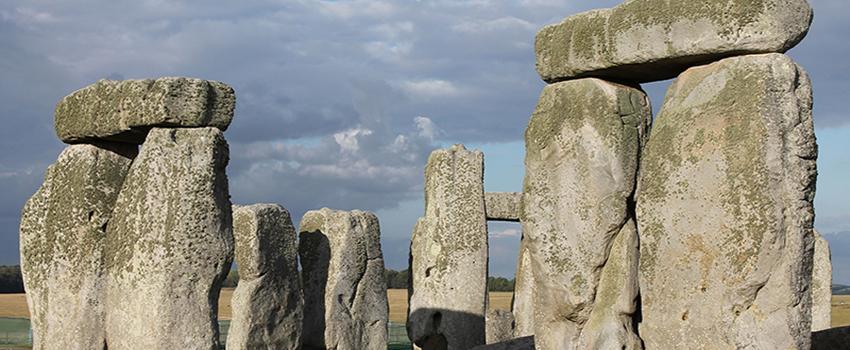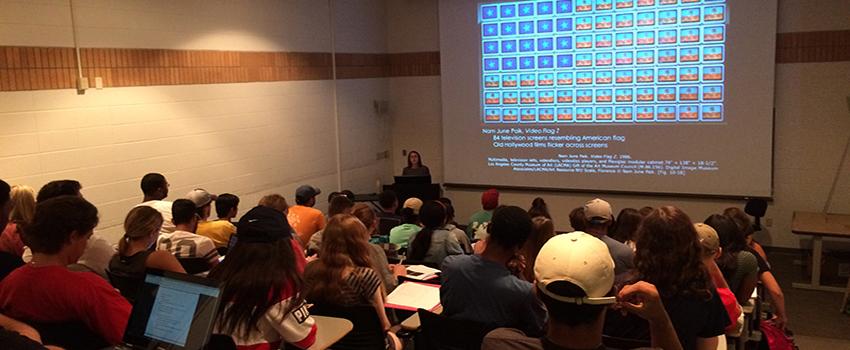Art History
“The art historian seeks to interpret and understand art and architecture by using a variety of different methods including learning about artists' lives, and attempting to understand the societies in which the art was produced.”
Art history is the study of art and architecture created in both the past and present by artists, architects, and craftspersons from various cultures ranging from antiquity to the contemporary world. What constitutes as art can range from traditional fine art (such as paintings and sculptures), objects in popular culture, and archaeological artifacts. Art and architecture is made for a variety of reasons from a variety of different materials; it can be a reflection of the artist’s life, a culture’s religious beliefs, or a source of political propaganda. The art historian seeks to interpret and understand art and architecture by using a variety of different methods including learning about artists' lives, and attempting to understand the societies in which the art was produced. In addition to learning the social, historical, cultural, and aesthetic significance of the visual arts, students in Art History acquire a knowledge of critical analysis, interpretive skills, research, communication, and creativity. Majoring in Art History can provide a sound preparation for jobs in traditional art historical fields such as museums, galleries, and auction houses. In addition, it also provides an advantage for entry into a variety of professional fields such as law, medicine, and business, especially given the increasing demand by professional schools that applicants have a broad intellectual background.
There are several areas of specialization available to a student majoring in Art History for both the BA and BFA degrees, including Ancient (3500 BC-500 AD); Medieval (1-1300 AD); Renaissance, Baroque, Eighteenth Century (14th to 18th centuries); Modern (19th and early 20th century), and Contemporary (1965-Present). While students may choose an area of specialization, they will be required to take at least one class in all five areas of study.
Bachelor of Arts Degree
The BA degree offers the student a degree with a greater breadth of knowledge by giving the student the opportunity to minor in a field of study in other areas of the humanities, science, or business. The BA degree also requires four semesters (two years) of a foreign language, important not only for pursuing an art history career, but also for business and law degrees. Students who plan to pursue a graduate degree in Art History, Classical Archaeology, Religious Studies, Museum Studies, and Education benefit from a degree in Art History. The BA also provides a sound academic background for students who intend to pursue graduate or professional degrees such as law, business, marketing, and medicine where observation and critical thinking skills are a must.
Bachelor of Fine Arts Degree
The BFA is designed for students who are interested in the practical application and production of art. The BFA allows students to further focus their studies in a specialized field of art history culminating in an undergraduate thesis, as well as engaging in a secondary concentration in an area of studio art. Students going into art education, art therapy, art preservation, and art restoration, or who want to explore their artistic side often pursue this degree.
Art History Minor
The art history minor requires 21 hours in art history courses, including ARH 103 and ARH 123. The art history minor allows students to explore a variety of courses in different eras or to focus in on one or two specific periods. While many art history minors are majors in Anthropology, Classics, History, English, and Studio Art, we also have had minors in a variety of other fields. The Art History minor will compliment any major and is great for anyone who wants a general knowledge of art and architecture before traveling both nationally and internationally.
Areas of Study
Ancient (3500 BC-500 AD): Students who choose to focus on Ancient art, architecture, and archaeology will be concentrating primarily on the art of Greece and Rome, including such famous monuments as the Parthenon in Athens, the Pantheon and the Colosseum in Rome, and the ancient city of Pompeii. Compared to the other fields of art history, there is a greater emphasis on archaeology in this area of study. Many students in this field choose to go on to pursue graduate degrees in Classical art and archaeology and/or work in museums with a large ancient collection. All of the courses in this field are cross-listed with Classics and can be used towards minors in Museum Studies and Classical Studies, as well as majors in Philosophy and Classics. Minors that pair well with a BA degree in this area are Anthropology, Classical Studies, History, Museum Studies, Foreign Languages, and Religious Studies. For those students interested in art restoration, a Chemistry minor is suggested. For those students pursuing a BFA with a concentration in Art History with an emphasis in ancient art and architecture, a secondary in ceramics, sculpture, painting, or interdisciplinary is desirable.
Medieval (1-1300 AD): Students who choose this field of art history will focus on the art and architecture of the Europe and the Near East during the Middle Ages. In this period of art history there is a strong emphasis on Christian and Islamic art and architecture that include monuments such as the Dome of the Rock in Jerusalem and Notre Dame in Paris. This field of study is of great interest to students interested in the rise of Christianity and Islamic religions. There is often an emphasis on religious, sculptural, and architectural themes in this area of art history. All of the courses in this field can be used towards a minor in Museum Studies. Minors that pair well with an Art History degree in this area are Anthropology, Classical Studies, History, Museum Studies, Foreign Languages, Philosophy, and Religious Studies. For those students interested in art restoration, a Chemistry minor is suggested. For those students pursuing a BFA with a concentration in Art History with an emphasis in medieval art and architecture, a secondary in ceramics, glass, painting, sculpture, or interdisciplinary is desirable.
Renaissance, Baroque, and the Eighteenth Century (14th-18th centuries): This area if art history is often referred to as the early modern era is an exciting period in the world of art architecture. Students who choose this field of study will explore the art and architecture of Europe beginning in the Renaissance to the French Revolution. The study of the early modern era begins with "rebirth" (Renaissance) of the visual arts, focusing on the artistic works of the great Italian and Northern Renaissance masters, including Leonardo da Vinci, Michelangelo, Raphael, Albrecht Dürer and Jan van Eyck. The Renaissance is followed by the art of the counter-reformation in the 17th century - Baroque Art and Architecture - including such artists as Caravaggio, Rubens, Rembrandt, and Velazquez. Students will examine along with the impact of the Counter Reformation, global exploration and early modern science on the art and architecture of the period. The early modern period comes to a close with the art and architecture in Europe and the Americas during the 18th century, a period of rich cultural and intellectual exchange known as the "Enlightenment." Classes in this area address a number of key themes in the playful, sensual style known as the Rococo; complex treatments of gender; the fascination with nature and science; and encounters both economic and cultural with people of other parts of the world, notably China. Minors that pair well with a BA degree in this area are Anthropology, History, Museum Studies, Foreign Languages, Gender Studies, International Studies, Natural Sciences such as Biology, Philosophy, and Religious Studies. For those students interested in art restoration, a Chemistry minor is desirable. For those students pursuing a BFA with a concentration in Art History with an emphasis in early modern art and architecture, a secondary in glass, painting, pottery, printmaking, sculpture, or interdisciplinary is desirable.
Modern (19th and early 20th century): Students who choose this field of art history will focus on the art and architecture of Europe and the United States during the 19th and early 20th century. In this period of art history there is a strong emphasis on the rapid changes resulting from industrialism and democratic revolutionary movements. The major movements in the period of Modern art include Neoclassicism, Romanticism, Realism, Impressionism, Fauvism, and Cubism, most of which developed in the art center of Paris. There is often an emphasis on social and political themes in this area of art history. All of the courses in this field can be used towards a minor in Museum Studies. Minors that pair well with an Art History degree in this area are History, Museum Studies, Foreign Languages, Philosophy, International Studies, and Gender Studies. For those students interested in art restoration, a Chemistry minor is suggested. For those students pursuing a BFA with a concentration in Art History with an emphasis in Modern art and architecture, a secondary in glass, painting, photography, printmaking, sculpture, or interdisciplinary is desirable.
Contemporary (1965-Present): Students who choose this field of art history will focus on the art and architecture
from the mid-20th to the 21st century from around the globe with emphasis on the United
States. In this period of art history there is a break from the modernist artistic
canon and a desire to move away from the traditional Western cultural model, preferring
instead global, multicultural, interdisciplinary, and multimedia practices. Some of
the movements in the period of Contemporary art include Pop Art, Minimalism, Conceptual
Art, Performance Art, and Neo-Expressionism to name a few. There is often an emphasis
on social and political themes in this area of art history. All of the courses in
this field can be used towards a minor in Museum Studies. Minors that pair well with
an Art History degree in this area are History, Museum Studies, Foreign Languages,
Philosophy, International Studies and Gender Studies. For those students interested
in art restoration, a Chemistry minor is suggested. For those students pursuing a
BFA with a concentration in Art History with an emphasis in Contemporary art and architecture,
a secondary in animation, glass, painting, photography, printmaking, sculpture, or
interdisciplinary is desirable.
For more information about the course, please see the University Bulletin.







